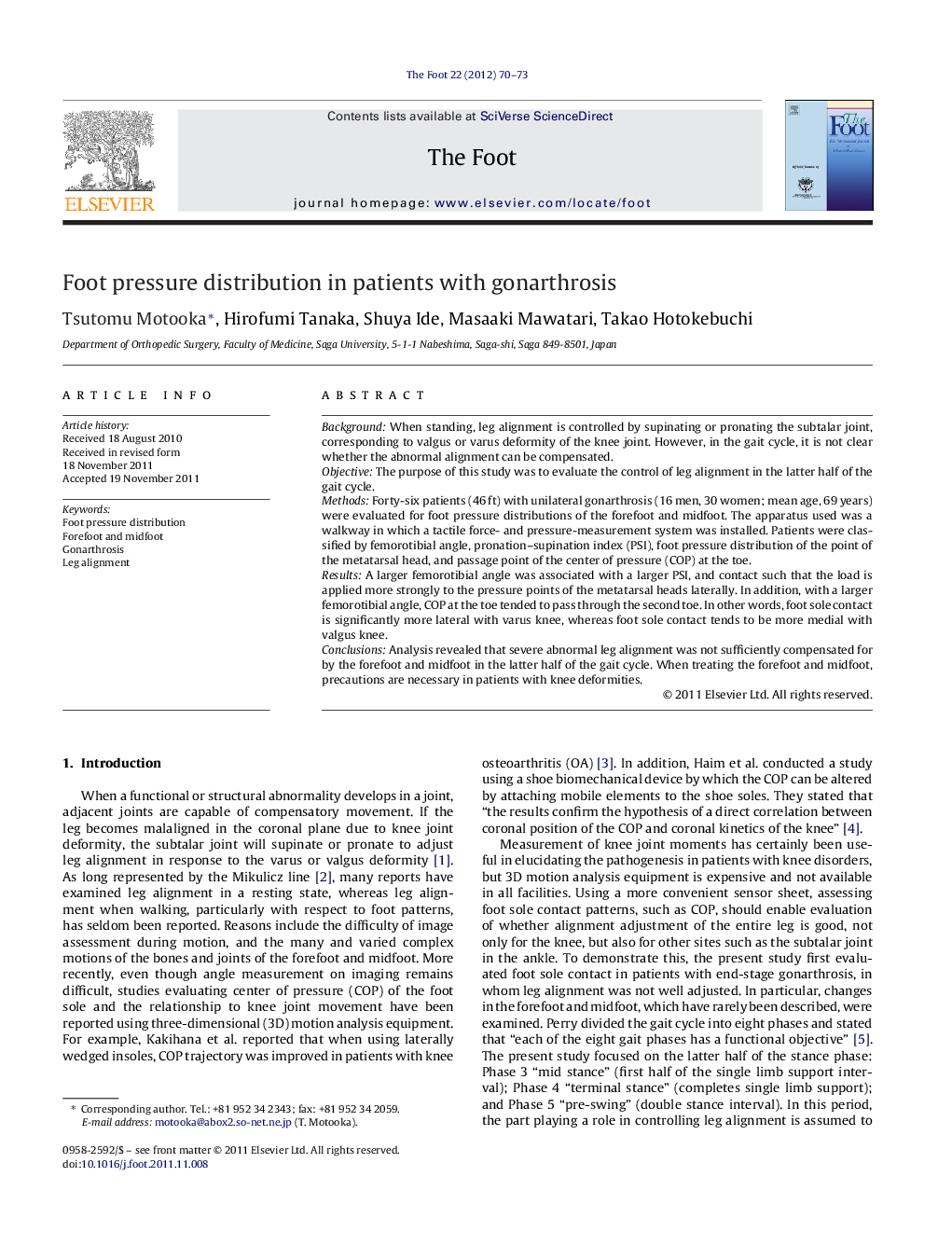| Article ID | Journal | Published Year | Pages | File Type |
|---|---|---|---|---|
| 2711293 | The Foot | 2012 | 4 Pages |
BackgroundWhen standing, leg alignment is controlled by supinating or pronating the subtalar joint, corresponding to valgus or varus deformity of the knee joint. However, in the gait cycle, it is not clear whether the abnormal alignment can be compensated.ObjectiveThe purpose of this study was to evaluate the control of leg alignment in the latter half of the gait cycle.MethodsForty-six patients (46 ft) with unilateral gonarthrosis (16 men, 30 women; mean age, 69 years) were evaluated for foot pressure distributions of the forefoot and midfoot. The apparatus used was a walkway in which a tactile force- and pressure-measurement system was installed. Patients were classified by femorotibial angle, pronation–supination index (PSI), foot pressure distribution of the point of the metatarsal head, and passage point of the center of pressure (COP) at the toe.ResultsA larger femorotibial angle was associated with a larger PSI, and contact such that the load is applied more strongly to the pressure points of the metatarsal heads laterally. In addition, with a larger femorotibial angle, COP at the toe tended to pass through the second toe. In other words, foot sole contact is significantly more lateral with varus knee, whereas foot sole contact tends to be more medial with valgus knee.ConclusionsAnalysis revealed that severe abnormal leg alignment was not sufficiently compensated for by the forefoot and midfoot in the latter half of the gait cycle. When treating the forefoot and midfoot, precautions are necessary in patients with knee deformities.
